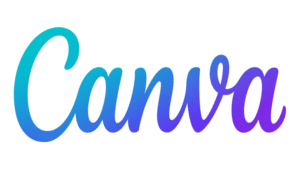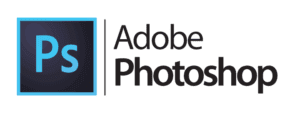Since Google released the Penguin update in 2012, SEOs have had to change their tactics to improve their website’s search engine ranking. One way that has become increasingly important is by optimizing your website’s images. By adding alt text and title text to your images, you can make them more visually appealing to users and help improve your site’s SEO ranking. In this blog post, we’ll discuss how you can use alt text and title text to improve your website’s SEO ranking.
Let’s Talk Basics
SEO Images is a process of optimizing images on a website to improve its visibility on search engine results pages (SERPs). This can be done through various methods such as adding keywords to the file name and metadata, using descriptive captions and alt text, and embedding the images on relevant pages.
One of the most important aspects of SEO is creating keyword-rich content that search engines can easily find and index. However, another important factor in achieving high SERP rankings is the use of quality images.
Unfortunately, many website owners and webmasters neglect the optimization of their images, thinking that it is not necessary or that it will not have a significant impact on their search engine rankings. But this is not true.
Image optimization is just as important as any other form of SEO, and it can have a greater impact on your SERP rankings than traditional text-based optimization techniques.
In addition to improving your website’s visibility in SERPs, optimizing your images can also help to increase click-through rates (CTRs) and organic traffic.
What Are Alt Texts And Why Are They Important For SEO Images Strategy
Alt texts have been used for centuries as a way to convey additional information about a text. In the early days of the internet, alt texts were used primarily as a way to provide additional information for people who were visually impaired. However, over time, alt texts have become an important part of online communication, and are now used to add additional context to images, videos, and other forms of media.
When used properly, alt texts can provide a wealth of information about the content of an image or video. They can also be used to add humor or levity to a piece of content. However, alt texts should always be used sparingly, as too much text can make an image or video difficult to understand.
Alt texts are particularly important for people who are visually impaired. By providing additional context, alt texts can help these individuals understand the content of an image or video. Alt texts can also be used to describe an image or video for people who are unable to see it.
Finally, alt texts can be used to improve the search engine optimization (SEO) of a website. By including relevant keywords in alt texts, website owners can help their site rank higher in search results. This, in turn, can lead to more traffic and higher levels of success.
What Are Title Texts And Why Are They Important For SEO Images Strategy?
History Of Title Texts
There’s no one-size-fits-all answer to this question, as the history of SEO title texts depends on the specific website and situation. However, in general, these types of titles began appearing when search engines started giving more weight to the words used in links. This meant that those who wanted their websites to rank highly in search results needed to ensure that their links contained keywords that were relevant to their site’s content.
Over time, this practice became more refined, and today many different factors go into creating an effective SEO title text. However, the basic premise is still the same: using relevant keywords to attract potential visitors and improve your website’s ranking in search results.
Why Should Title text Be Important To Your Business?
SEO title texts are important for drawing in potential website visitors. They act as a way to tease and entice people into clicking on your link, as well as to give them an idea of what the page is about before they even visit it. Because of this, it’s important to make sure that your title text is both effective and accurate.
When should businesses use an H1 instead of an H2 for their SEO Title Texts?
There isn’t a definitive answer to this question, as the decision depends on the specific website and situation. However, in general, businesses should use an H1 when they want to emphasize a particular keyword or phrase, as this will help to improve their website’s ranking in search results. Additionally, using an H1 can also help to make your website more accessible for users who are searching for specific information.
Ultimately, the decision of whether to use an H1 or H2 for your SEO title texts comes down to what is going to be most effective for your particular website.
How To Write Effective Alt and Title Texts For Your Images
How To Write An Effective Alt Text
When writing an alt text, it’s important to keep the following in mind:
The Alt Text Should Be Brief, But Specific To The Image That It Is Describing.
You want to ensure the alt text is clear and relates to what the image. For example, if you have an image of a male model wearing a pink sweater, the perfect alt text would look like this:


<img src=”pink.ca” alt=”male model wearing a pink sweater”>
A bad example of a bad alt text would be:
<img src=”pink.ca” alt=”pink sweater”>
The Alt Text Should Be Written In A Way That Is Accessible To All Users.
Alt text is an amazing tool for SEO but as well to keep in mind alt text is as well for those who are visually impaired, and are potential clients as well.
If you’re looking to improve your SEO image and attract visually impaired customers, adding alt text is a great way to do so. Alt text provides a textual description of an image, which can help people who are visually impaired understand what’s on the screen. This can be especially helpful when it comes to navigating the web – if an image is the only thing on a page, alt text can help people understand what they’re looking at.
The Alt Text Should Not Be Used To Promote Or Sell A Product Or Service.
When you promote or sell a product or service in your alt text, you are not providing any useful information to your readers. This is what happens when you use Alt text to promote or sell a product or service:
- It can be annoying and frustrating for your readers.
- Possible penalties to promote or sell products or services in your alt text. It is against the rules of most social media platforms.
If you want to include a call to action in your alt text, make sure that it is relevant to the content of your image and that it is not selling anything. For example, if you have an image of a beautiful sunset, you could include a call to action in your alt text that encourages your readers to enjoy the sunset.
“We need to stop interrupting what people are interested in and be what people are interested in.” – Craig Davis, Co-founder of Sendle
The Alt Text Should Not Be Used For Keyword Stuffing.
Adding keywords to the alt text is a good way to help your site rank better in search engines. However, you don’t want to stuff them in so much that it becomes difficult to read or understand.
A good rule of thumb is to include only the keywords that are necessary and to make sure that they are included in a way that makes sense.
When it comes to optimizing your website for search engines, one of the most important things that you can do is to add keywords to your alt text. This is a process known as alt text optimization and it can be extremely beneficial for your site.
Tools You Should Be Using For Alt Texts:
There are a number of tools businesses can use to create amazing alt texts for their images. Some of these tools include:
Canva


Canva is a free online design platform that makes it easy for businesses to create professional-looking visuals. With Canva, you can easily create custom alt text for your images.
Is It User Friendly?
Canva is extremely user-friendly when it comes to creating alt texts for images. All you have to do is add the text field to the image, and then Canva will automatically generate a text alternative for you. This makes it easy to ensure that your images are accessible to everyone, regardless of their level of disability.
Adobe Photoshop


Adobe Photoshop is a popular image editing software that can be used to create alt text for images.
Is It User Friendly?
Adobe Photoshop is an extremely user-friendly program when it comes to creating alt texts. The software provides a wide variety of fonts, text sizes, and text colors, which makes it easy to create visually appealing alt text that accurately describes the image. Additionally, Photoshop allows you to adjust the opacity of the text, so you can ensure that the text is visible but not obtrusive.
When creating alt text in Photoshop, it is important to keep a few things in mind. First, make sure that the text is legible and easy to understand. Second, try to keep the alt text concise; too much text can be overwhelming and difficult to read. Finally, make sure that the alt text accurately describes the image; this will help users with visual impairments understand the content of the image.
Creating alt text in Photoshop is a simple process that can make a big difference for users with visual impairments.
PicMonkey (by Shutterstock)


PicMonkey is an online photo editor that makes it easy to edit and add text to images.
Is It User Friendly?
If you’re looking for an easy way to add alt texts to your images, PicMonkey is a great option. With its simple and user-friendly interface, you can create meaningful alt texts in no time. Plus, you can also use PicMonkey to edit your images and add text or other elements to them. So if you’re looking for a one-stop-shop for all your image needs, PicMonkey is worth checking out.
GIMP


GIMP is a free and open-source image editing software that can be used to create alt text for images.
Is It User Friendly?
GIMP is easy to use when making alt texts. All you need to do is open up the program, and then create a new file. Once you have created the new file, you can then start adding in your text. You can also add different effects to make your text look more interesting. So, if you are looking for an easy way to create alt text, then GIMP is the program for you.
With these tools, businesses can easily create amazing alt text for their images that will help improve their online visibility and reach.
How To Write An Effective Title Text
When it comes to writing SEO-friendly titles, there are a few things to keep in mind. Here are three tips to help you write catchy titles that also help you rank higher on Google:
1. Make sure your title is relevant to your topic.
One way to ensure that your SEO title texts are related to your business is to come up with a list of keywords that are relevant to your industry and make sure that at least one of those keywords appears in your title text.
You can also use Google AdWords Keyword Planner to find related keywords and get ideas for new content topics.


Another way to make sure your title texts are effective is to use actionable words and phrases that encourage clicks:
- For example, instead of using the word “article,” you could use the word “tutorial” or “how-to.”
- You can also use numbers in your titles, as they tend to perform well. For example, you could write a blog post titled “10 Tips for Optimizing Your SEO Strategy.”
Finally, it’s important to keep your title text short and sweet. Longer titles tend to get cut off in search results, so aim for around 50-60 characters. Keep in mind that your goal is to entice readers to click through to your content, so make sure your title accurately reflects what they’ll find once they get there.
2. Include your keyword in your title.
When creating a title for your image, it is important to include keywords that will help improve your SEO. Including keywords in your title will help to ensure that your image appears as a result when someone searches for those terms. Making sure that your title is SEO-friendly will help you to reach more potential customers and grow your business.
3. Keep your title concise and easy to read.
When creating your SEO title text, it’s important to keep it concise and easy to read. This will help make your page more appealing to potential visitors, and also make it easier for search engines to index. Additionally, keeping your text concise will help ensure that your page doesn’t get cut off in search engine results pages (SERPs).
Finally, it’s important to use keywords in your title text, as this will help improve your page’s ranking in search engines. However, you should avoid keyword stuffing, as this can negatively impact your page’s ranking.
When writing your SEO title text, remember to:
- Keep it concise and easy to read:
Keeping your image title text concise and easy to read is important for a few reasons.
- First, it makes it easier for people to find and remember your images.
- Second, it makes your posts look more professional and organized.
- Finally, it helps keep your blog looking clean and uncluttered.
Also, avoid using all CAPS for your image titles. This can make them hard to read and can come across as shouty or unprofessional.
When it comes to formatting, there is no one right way to do things. Just make sure that your titles are easy to read and understand.
Remember: People will be looking at your images from a variety of devices, so use a font that is legible on all screen sizes.
- Use keywords wisely:
When creating an image title, it’s important to use keywords wisely. Doing so will help potential viewers find your image when conducting a search. Additionally, using the correct keywords can help improve the visibility of your image.
- Avoid keyword stuffing:
When creating an image title, you should avoid keyword stuffing. This is because it can make your titles sound spammy and unnatural, which can hurt your click-through rates. Additionally, it can also get you penalized by Google’s search engine algorithms.
Instead, you should focus on making your image titles descriptive and concise. You want to include relevant keywords, but don’t stuff them in:
- For example, if you have an image of a dog, a good title would be “dog playing fetch” or “cute dog playing.”
- Additionally, you can also include additional information in your image titles, such as the breed of the dog or the location where the photo was taken. This can help give context to your images and make them more searchable.
- Make sure your page doesn’t get cut off in search engine results pages (SERPs):
If you want people to see your SEO images, you need to make sure that your title text doesn’t get cut off in the search engine results pages. That’s because the title text is one of the most important factors that help people determine whether or not they should click on your image. So if your title text gets cut off, it can have a negative impact on your click-through rate.
To prevent this from happening, you should use SEO-friendly title tags. These title tags will help to ensure that your title text is not cut off in the search engine results pages. In addition, you should also make sure that your images are placed in the correct position on the page. This will help to ensure that your images are seen by the people who are looking for them.
To have a successful image title text, you need a minimum of 55 characters. The text should be interesting and relevant to the image. The title should also include keywords that are relevant to the image.
By following these tips, you can write titles that are both eye-catching and informative, helping you to draw in readers and rank higher in search engines.
Here are some good examples of Title Texts that will draw readers and potential clients in:
- How to Choose the Right Gym
- How to Get the Most Out of Your Gym Membership
- The 5 Best Gyms in Toronto
- Why You Should Join a Gym
- Examples of good alt and title text strategies
Tools you can use to help with your SEO Image strategy
When creating alt and title texts for their SEO image strategy, businesses should consider using free tools such as:
Google’s Keyword Planner
Google’s Keyword Planner can help businesses identify relevant keywords to use in their alt and title texts.
Webmaster Tools
Webmaster Tools can help them track their website’s images and ensure that their alt and title texts are being used effectively.
Webmaster Tools To Help With Your Alt Text and Title text Strategy
There are a number of webmaster tools that can be used for SEO image strategies. Some of these tools are free, while others require a paid subscription.
Free Webmaster Tools:
Google Images


Google Images is a free tool that allows you to search for images on the web. You can also use Google Images to find images to use on your website.
Flickr


Flickr is a free online photo-sharing service. You can use Flickr to find images to use on your website or in your marketing materials.
Paid Subscription Webmaster Tool:
Shutterstock
![]()
![]()
Shutterstock is a paid subscription service that provides access to a library of stock photos and illustrations. You can use Shutterstock to find images to use on your website or in your marketing materials.
When you are using these tools, it is important to remember that you should only use images that are relevant to your website’s content. Otherwise, you may be penalized by the search engines for using irrelevant images.
Images are an important part of any SEO strategy, and using the right alt text and title text can help you improve your ranking on search engines while also providing information to customers about what they’re looking at. If you want to learn more about how to use images for SEO or need help getting started, sign up for our newsletter today. We’ll send you weekly tips and tricks that will help you improve your website ranking and drive traffic to your site.




